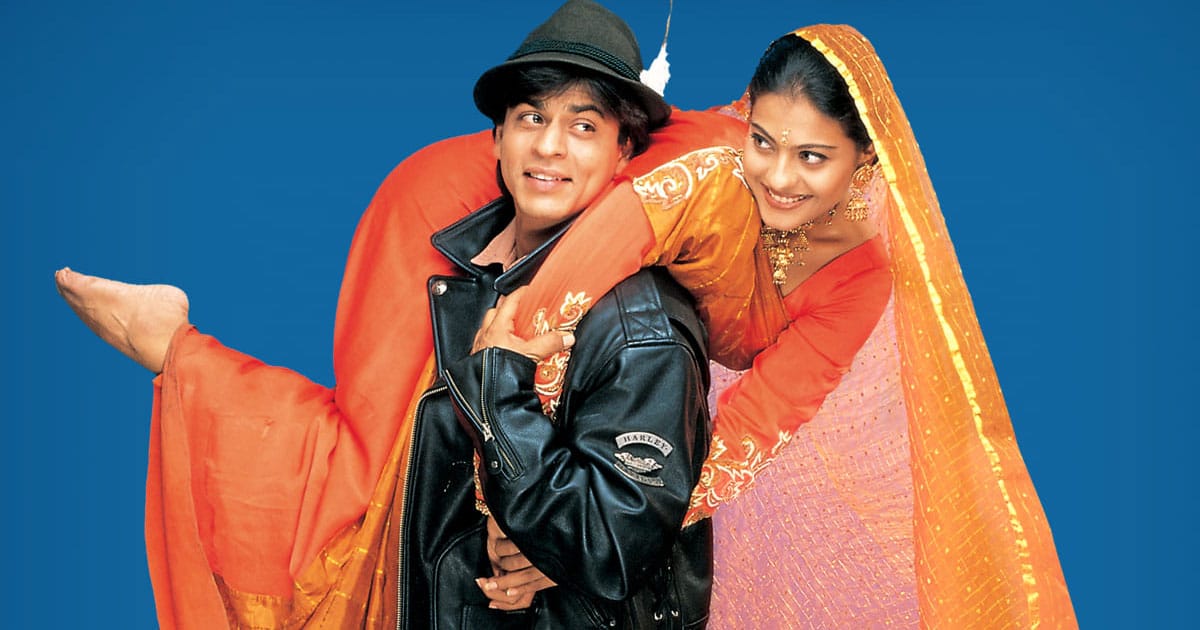The endless stretch of green meadows nestled against the snow-capped Swiss Alps, vibrant mustard fields or Sarson ka khet in the colorful land of Punjab, the sweet melody of the mandolin – the film that romanticized all this is set to celebrate its 25th year this October. Yes, you guessed it right! We are talking about none other than the Bollywood classic Dilwale Dulhania Le Jayenge or DDLJ as it is popularly known.
A film that marked the directorial debut of Aditya Chopra and turned Shah Rukh Khan and Kajol into an iconic romantic pair, DDLJ was released in 1995 on October 20th.

Dilwale Dulhania Le Jayenge established the concept of an ideal romance and continues to inspire directors even today. A film that resonates with every 90’s kid out there is still considered a legendary love story, despite its little relevance to modern times. Maybe that’s the reason it kept on rolling in the Mumbai single screen, Maratha Mandir, for all these years till March 2020 before Covid struck the nation.
Why do we still watch DDLJ?
A coming of age film, DDLJ does not really resonate with the millennial. Even the 90’s generation, who perceived this film as a symbol of love has grown up to identify its patriarchal dominance. However, we still keep going back to it. But why?
It had the lovable dad (read ‘Pop’) every kid wanted. An immigrant Indian who made it big in London, the role was perfected by the jovial Anupam Kher. We all wanted parents who would just laugh it off if we failed a subject or help us win over our girlfriend/boyfriend and their family.
Not to mention the single aunt played by Himani Shivpuri who pointed out that it is never too late to find love.
DDLJ had the most remarkable dialogues and songs that are still a hit with most. From the “Bade Bade deshon mein aaisi choti choti baatein hoti rehti hain…” to Jatin-Lalits’s blockbuster melody “Mere Khwaabon Mei Jo Aaye”, the magic still remains.
The film also showed a larger than life NRI romance – a righteous man with a westernized lifestyle holding Indian values and sanskaar close to his heart.
Altered perceptions – DDLJ for me Then v/s Now
I don’t even clearly remember the first time I watched the movie. But I do remember dancing alone in my room on Mere Khawbon Mei Jo Ayei pretending to be the liberated heroine under the rain. Most of us at some point wished to have a real-life train experience like the film’s climax.
But it is now as an adult, I have realized how dangerous these perceptions truly are.
A symbol of a legendary love story, I now realize that with the love comes the baggage of patriarchy, the limitations of a girl’s dreams, and several other compromises. I don’t think I will be wishing for a similar fairy tale romance anymore. After all, this is where the differences between real life and the reel life come under notice.
Freedom amidst patriarchy
The film, in contemporary times, has been heavily criticized for its depiction of patriarchy, how a girl needs permission from her father for her every decision, how her mother is used to being silenced, and the list goes on.
But despite all this, the concept of four girls going for a wild college trip and the climax sequence with the dialogue “Ja Simran Ja, Jee Le Apni Zindagi” pretty much spoke of a considerable amount of freedom in the ’90s.
Overseas appeal
The ultimate Hindi rom-com, DDLJ made a grossing 2 million abroad and became the iconoclastic symbolism of Bollywood overseas. Though it did convey the narrow mindedness and conservatism of the middle-class Indian family when it came to the liberty of the girl child, it did manage to create a cult.
In fact, to celebrate its silver jubilee, the makers of the film are planning to release it in Spain in October 2020 (as confirmed by film distributor Ajay Jethi). There will also be the unveiling of a bronze statue of the lead pair at Leicester Square, London, to mark its 25th anniversary.
Love it or hate it, you cannot ignore it. The alluring love story of Raj and Simran still manages to charm its way through a plethora of other similar films. In fact, after ‘Sholay’, it was the second film to have developed a cult of its own. The classic tagline of DDLJ – “Come Fall in Love” will make the audience want to fall in love again with its sheer magic, even after 25 years of its inception.
Did DDLJ had its magical spell on you too?

